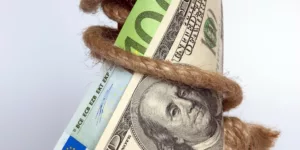If there’s one thing that is a consistent thorn in any merchant’s side, it’s chargebacks. These disputed transactions make sense in theory, but are unfortunately prone to abuse. Let’s take a look at what chargebacks are, why customers love them and why merchants wish to avoid them.
Chargebacks Offer Consumer Protection but Stiff the Seller
In an ideal world, customers would always be satisfied with their products and services, and merchants would never have to issue any refunds or handle any returns or exchanges. But sometimes a product does not meet the buyer’s expectations, and they wish to get their money back.
There are several ways in which the buyer could handle the situation, including contacting the bank and disputing the charge for the item or service. As you might imagine, a chargeback is the most frustrating scenario for the merchant, because it leaves the merchant essentially powerless. The consumer bypasses the merchant altogether and takes their complaint to the issuing bank. The bank looks into the matter and issues a refund by moving the money from the merchant’s account back to the consumer’s account.
It’s easy to see how chargebacks can be abused to perpetrate fraud, and that’s the main reason why merchants wish to avoid chargebacks altogether. With a chargeback, the merchant suffers a loss. The consumer does not have to return the product, and there’s no opportunity to enact an exchange or give an in-store credit, options that satisfy the customer while also protecting the seller.
Other Ways Chargebacks Impact Businesses
In addition to having to swallow the loss of the product when a consumer opts for a chargeback instead of a return, merchants can be affected in other ways, such as:
- Having to pay a processing fee (typically between $20 and $100) for every chargeback investigated by the bank, even if that chargeback is cancelled by the consumer
- Paying an additional penalty if the total chargeback costs exceed a predetermined amount
- Losing their business account with the bank if they are deemed too “high risk” due to excessive chargeback claims
- Being blackballed after having an account closed due to excessive chargeback claims, thereby making it virtually impossible to open another bank account for a predetermined period.
- Having to sign up for a high-risk merchant account at the bank, which are associated with high transaction fees
Lowering the Risk of Chargebacks or Avoiding Them Altogether
Is a constant barrage of chargebacks giving you a migraine? It’s possible that you are the victim of fraud, in which case it’s important that you dispute any chargebacks that seem out of line.
However, you can also take a few steps to avoid chargebacks and the associated financial losses, such as:
- Using a name on your bank account that your customers will recognize. Known as a Doing Business As (DBA) name, it appears on bank statements. Use the name of the specific business and not of an umbrella company or your personal name, for example.
- Take steps to verify the authenticity of credit and debit cards. Verify the CVV number, expiration date, cardholder’s zip code, etc. Use any other fraud-tracking strategies recommended by your bank to ensure that every transaction is valid, thus reducing the likelihood of the real account holder issuing a chargeback claim.
- Prevent chargebacks by handling disputes yourself. This can be as simple as putting your customer service telephone number on all bills to encourage consumers to call you instead of the bank, or you can go a more heavy-duty route and sign up for a cardholder dispute resolution service, in which claims are investigated on your behalf before a chargeback is ever issued.
The first step toward resolving problematic chargebacks is to understand what they are and why they are sometimes misused by consumers. If you’re certain your products are exceptional, excessive chargebacks may be fraudulent.








